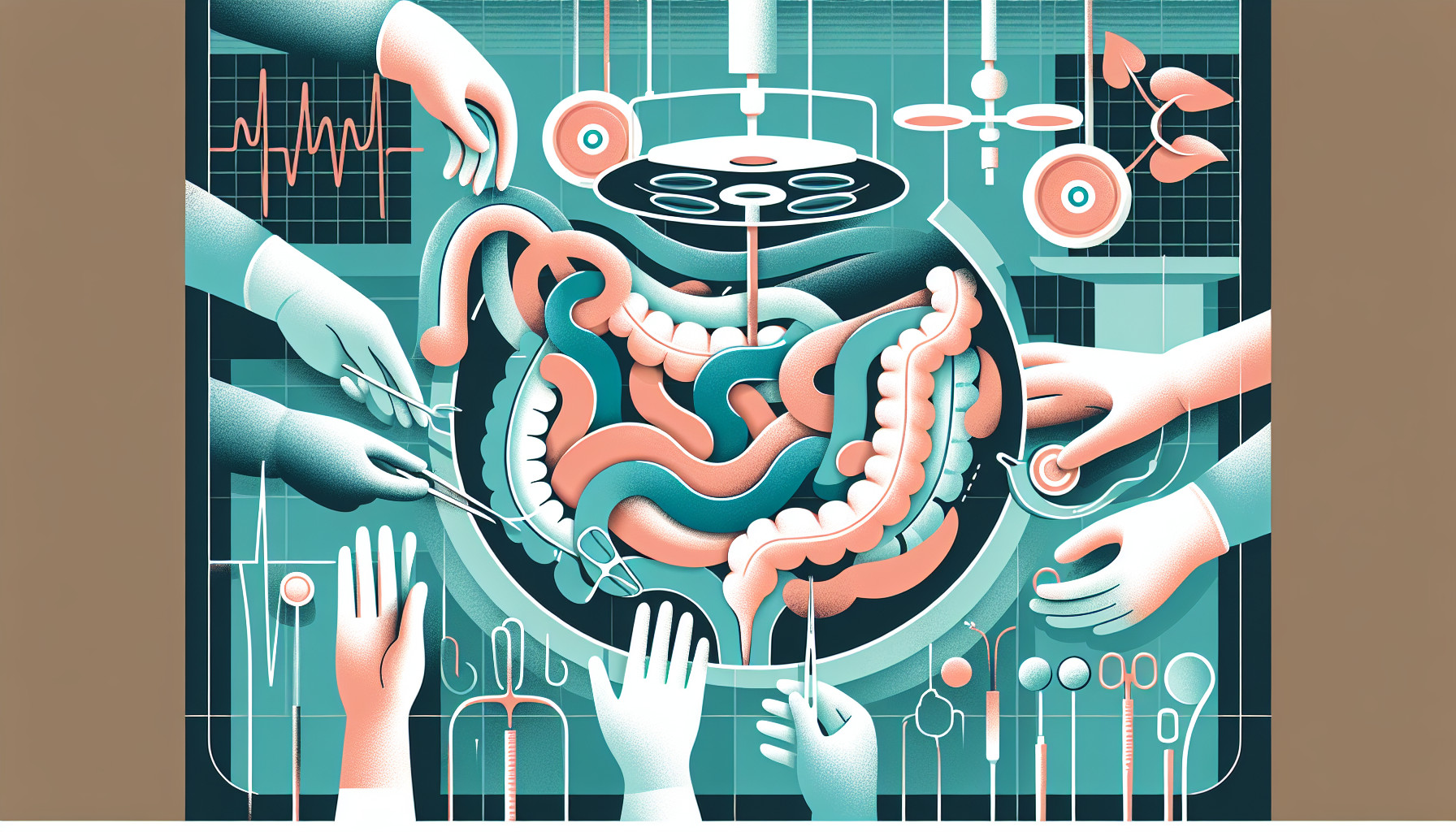Our Summary
This paper discusses a surgical procedure called complete mesocolic excision (CME), which is a technique used for removing part of the colon in patients with colon cancer. The process is complex and can lead to serious complications, particularly when done using a minimally invasive technique known as laparoscopy. Therefore, the authors aimed to standardize the procedure to make it safer and easier to teach.
The authors gathered a group of expert surgeons and an anatomist, who met three times to discuss and agree on the best way to perform this surgery. They used a model they call the “open book” to represent the different parts of the body that the surgery involves. They also identified eight key steps in the procedure that they call “critical views of safety”. If the surgeon cannot clearly see each of these steps, they may need to switch to a more traditional, open surgery.
The authors believe that their standardized method, which includes the “open book” model and the “critical views of safety”, could make the procedure safer and easier to teach.
FAQs
- What is complete mesocolic excision (CME)?
- What is the “open book” model and the “critical views of safety” in relation to the CME procedure?
- Why might a surgeon need to switch to a more traditional, open surgery during a CME procedure?
Doctor’s Tip
One helpful tip a doctor might tell a patient about laparoscopic colectomy is to follow all pre-operative instructions provided by their healthcare team, including fasting guidelines and medication instructions. This can help reduce the risk of complications during and after the surgery. Additionally, it is important for patients to discuss any concerns or questions they have with their healthcare team before the procedure.
Suitable For
Patients who are typically recommended for laparoscopic colectomy include those with colon cancer, inflammatory bowel disease, diverticulitis, or other conditions that require removal of part of the colon. Additionally, patients who are considered to be good candidates for laparoscopic surgery in general, such as those who are relatively young and healthy, may also be recommended for this procedure. It is important for patients to discuss their individual medical history and condition with their healthcare provider to determine if laparoscopic colectomy is the best treatment option for them.
Timeline
Before laparoscopic colectomy:
- Patient is diagnosed with colon cancer and discusses treatment options with their healthcare provider.
- Patient undergoes preoperative testing and preparation for surgery, including bowel preparation and fasting.
- Patient meets with the surgical team to discuss the procedure and potential risks and benefits.
- Surgery is scheduled and patient is admitted to the hospital.
During laparoscopic colectomy:
- Patient is placed under general anesthesia.
- Surgeon makes small incisions in the abdomen and inserts a laparoscope to view the inside of the abdomen.
- Surgeon uses specialized instruments to remove part of the colon and surrounding tissue.
- Procedure may take several hours, depending on the complexity of the case.
- Surgeon closes the incisions with sutures or staples.
After laparoscopic colectomy:
- Patient wakes up in the recovery room and may experience pain and discomfort.
- Patient is monitored for complications such as infection or bleeding.
- Patient is encouraged to walk and gradually resume normal activities.
- Patient may need to follow a special diet and take medications to aid in healing.
- Patient attends follow-up appointments with the surgical team to monitor recovery and discuss any concerns.
What to Ask Your Doctor
Some questions a patient should ask their doctor about laparoscopic colectomy include:
- What are the potential risks and complications associated with laparoscopic colectomy?
- How experienced are you in performing laparoscopic colectomy procedures?
- What is the success rate of laparoscopic colectomy for my specific condition?
- Will I need to stay in the hospital after the procedure, and if so, for how long?
- What is the recovery process like after laparoscopic colectomy?
- Are there any dietary or lifestyle changes I should make post-surgery?
- How long will it take for me to fully recover and return to normal activities?
- What follow-up care or monitoring will be needed after the procedure?
- Are there any alternative treatment options to consider?
- Can you explain the standardized method and techniques you use for laparoscopic colectomy, including the “open book” model and “critical views of safety”?
Reference
Authors: Strey CW, Wullstein C, Adamina M, Agha A, Aselmann H, Becker T, Grützmann R, Kneist W, Maak M, Mann B, Moesta KT, Runkel N, Schafmayer C, Türler A, Wedel T, Benz S. Journal: Surg Endosc. 2018 Dec;32(12):5021-5030. doi: 10.1007/s00464-018-6267-0. Epub 2018 Oct 15. PMID: 30324463
